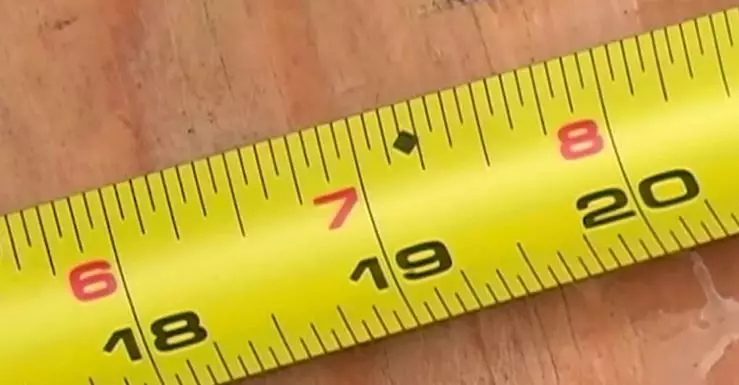
You'll know how to use a measuring tape - but do you know what the black diamond is about? How much do you really know about your measuring tape that sits so innocently in your toolbox?
So you know that on most measuring tapes you have the inches on the top and the cm on the bottom - that's pretty self-explanatory. You know how to pull it out, fix it and snap it back in like a pro.
Don't worry - it's all about to be explained to you as we hack the measuring tape for you.
Here are the secrets of the measuring tape revealed.
So What's The Deal With The Black Diamonds?
The thing is measuring tapes aren't just for people who are trying to find out whether or not their IKEA sofa will fit in their sitting room - it's also for people who are in construction.
Most people are quite confused as to what the black diamonds are for.
The black diamonds, as they're commonly called (sometimes shown as black circles instead), are actually stud or joist marks. Whilst not featuring on all tapes, stud marks frequently appear at 16" intervals and joist marks at 19.2" intervals. That's the common interval for boarding. Apparently.
Good to know.

What Are The Roman Numerals For?
Pull the blade out of the case and you may notice a Roman numeral within either a circle or a rectangle, generally printed in red or black. This refers to the accuracy of the tape.
There are four levels of tape measure accuracy. Class 1 ('I') is the most accurate. Class 2 ( 'II') the second most accurate with Class 3 (III) logically being the third. Unclassified tapes will not feature any marking on their blade. By 'unclassified' we mean that they have not been tested and guaranteed to conform to a particular level of accuracy.
It really depends what you're planning to do with the measuring tape and how accurate you need it to be. But at the same time - why not just have one level of accuracy when it comes to tape measures? Why are you making this needlessly confusing?
Other Random Tidbits
Every 12 inches, there will often (but not always) be a foot marking - just in case you need to know that.
The CE mark means that it complies with European Union standards.
M13 or M16 - and so on means that it was manufactured in the year 2013 or 2016.
Only one question remains - why are they yellow? What's the deal with that? Maybe it's so it's easier to see the small markings?
Metric vs Imperial
Urgh, metric versus imperial - why can't we just pick a system and stick to it?
In the UK, we use both metric and imperial - and that's probably why both is on the measuring tape. We weigh sugar by the pound, meat by the kilo and ourselves in stone.
But drinks - from milk to beer - are in pints. Cables are measured in metres, but we measure ourselves in feet and inches.
Our fuel is measured in litres but fuel economy is miles per galleon.
And snow and rainfall is in millimetres but windspeed is miles per hour.
No wonder our measuring tapes are confusing.
As someone on Reddit said: "The UK is indeed approaching the metric system inch by inch."
Featured Image Credit: